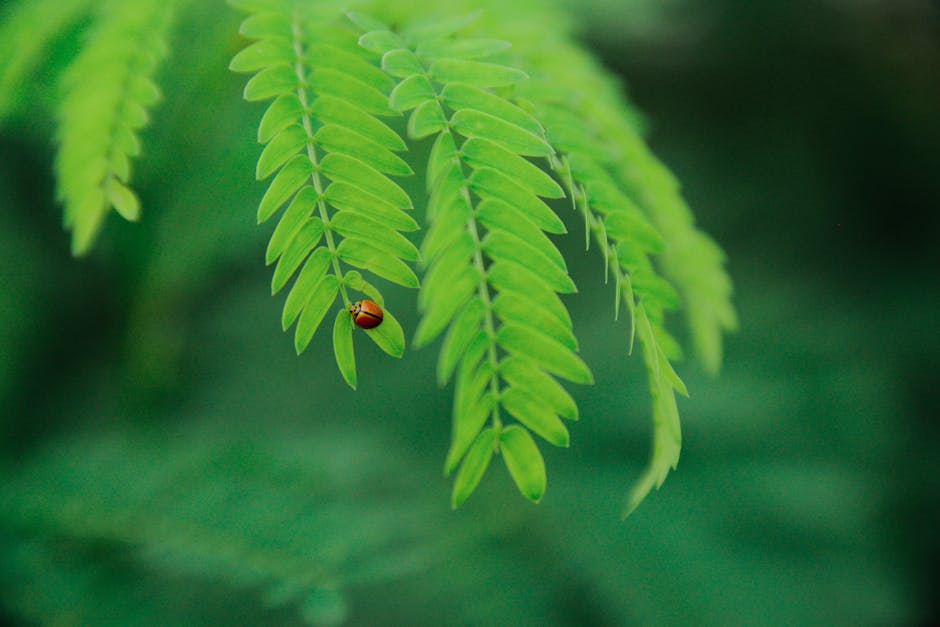
Are Predatory Insects Plaguing Your Garden?
If predatory insects are wreaking havoc in your garden, there’s a natural and effective solution: beneficial nematodes. These insecticidal, naturally occurring microscopic organisms live in the soil, feeding on a wide range of harmful insects. Unlike other nematodes that parasitize plants and animals, entomopathogenic nematodes—derived from the Greek terms “entomon” (insect) and “pathogenic” (disease-causing)—are a gardener’s ally. They quickly kill their hosts thanks to symbiotic bacteria in their systems and can control up to 200 species of insects across 100 families, offering wide-ranging pest protection.
In this comprehensive guide, we’ll explore what beneficial nematodes are, how they work, the types available, their application, and where to buy them. Let’s dive into how these fascinating organisms can provide safe, organic pest control for your garden.
What Are Beneficial Nematodes?
Beneficial nematodes are microscopic roundworms that offer a non-toxic, organic method of pest control. So safe are they that the Environmental Protection Agency (EPA) has waived the need for registration in pest management. They pose no threat to pets, humans, or sensitive areas like soils near drinking wells, unlike chemical pesticides. You don’t need special protective equipment to apply them, and they can be used with standard gardening tools like hoses and sprayers.
Types of Beneficial Nematodes and Their Behavior
There are two primary genera of insecticidal nematodes used for garden pest control:
- Steinernema: The most commonly sold genus for insect protection. Species like S. carpocapsae are “ambushers,” lying in wait for prey, while S. feltiae and S. riobrave combine ambusher and cruiser behaviors. Steinernema species often target surface or shallow-dwelling pests.
- Heterorhabditis: More challenging to produce commercially but highly effective against deeper-dwelling pests like grub worms. Species such as H. bacteriophora are “cruisers,” actively seeking prey over long distances underground.
Nematodes go through six life stages: egg, four juvenile stages, and adult. The third juvenile stage, known as “infective juveniles” (IJ) or “dauers,” is the most active and environmentally resistant, seeking out insect hosts to infect. They detect prey through carbon dioxide levels, temperature changes, and excrement trails, entering insects via natural openings or, in the case of Heterorhabditis, through the cuticle.
Once inside, nematodes release symbiotic bacteria—Xenorhabdus for Steinernema and Photorhabdus for Heterorhabditis—that kill the host within 24-48 hours by weakening its immune system and producing toxic chemicals. The nematodes then reproduce inside the host, feeding on its tissues and bacteria remnants, with hundreds of thousands of juveniles emerging to hunt new prey.
Identification and Life Cycle
Nematodes range from 0.6 to 2 millimeters in length, with cylindrical, unsegmented bodies. Steinernema species typically dwell in shallower soil, while Heterorhabditis species are more mobile, hunting up to seven inches deep. They move through water in soil pores, performing best in sandy soils with larger pores compared to compact clay. Proper soil moisture is critical for their efficacy, as watering helps them reach pests, lowers soil temperature, and aids movement through dense thatch.
You can check their effectiveness by inspecting grubs in the soil. Insects killed by Heterorhabditis often appear orange-red, while those killed by Steinernema are cream to dark brown due to bacterial pigments. Dead insects should not have a putrid smell—if they do, they weren’t killed by beneficial nematodes.
Target Pests for Beneficial Nematodes
Different nematode species target specific pests based on their behavior and soil depth preferences:
- Steinernema feltiae: Effective against fungus gnats, fly larvae, and caterpillar larvae; best in clay or silt soils, active at temperatures as low as 50°F.
- Steinernema carpocapsae: Targets mobile, surface-dwelling pests like caterpillars, cutworms, and webworms; optimal in sandy soils and temperatures of 72-82°F.
- Steinernema riobrave: Controls weevils and mole crickets with a wide host range; thrives in temperatures from 59-95°F, tolerating semi-arid conditions.
- Heterorhabditis bacteriophora: Versatile against caterpillar and beetle larvae, including Japanese beetle grubs; effective in warmer soils above 68°F.
- Heterorhabditis indica: Heat-tolerant up to 86°F or higher, targeting caterpillars, beetle larvae, weevils, and fungus gnats.
Choosing the Right Nematode for Your Climate
Soil temperature and climate play a significant role in nematode effectiveness. Heterorhabditis species generally prefer warmer conditions, while Steinernema species vary—S. feltiae excels in cooler climates, and S. riobrave adapts to a broad temperature range. Match the nematode species to both your target pest and local soil temperature for optimal results.
Benefits of Using Beneficial Nematodes
While not instantaneous, nematodes are highly effective over time, with host insects dying within 24-48 hours of infection. Their population grows as they reproduce inside hosts, continuing to hunt until food sources or suitable conditions diminish. They provide a sustainable, organic pest control method, requiring no personal protective equipment (PPE) and posing no toxicity risks, even compared to other biological controls like Bt.
Monitor your garden regularly after application—check soil for discolored grubs 48-72 hours post-application and again after a week or two. Track soil temperature and pest activity to assess their impact holistically.
How to Apply Beneficial Nematodes
Nematodes can be used in vegetable gardens, ornamental beds, lawns, containers, and pastures, targeting soilborne pests or even aboveground pests like leafminers. Follow these steps for effective application:
- Identify Target Pests: Determine the pest’s behavior (shallow or deep-dwelling) and soil conditions (temperature, type).
- Calculate Quantity: For example, 5 million nematodes cover 1,600 square feet; larger areas or container plants may require more.
- Timing: Apply in spring or fall when larvae are active in the soil. Evening application during summer avoids heat and UV exposure, as nematodes are sensitive to direct sunlight and temperatures above 90°F.
- Method: Use a watering can for small areas or sprayers (pump, hose-end, or irrigation systems) for larger spaces. Agitate the mixture to ensure even distribution, avoiding high-pressure pumps that could damage nematodes.
- Irrigation: Water soil thoroughly before and after application to help nematodes penetrate thatch and reach targets. Maintain soil moisture for two weeks post-application, watering every 3-4 days if rain is absent.
Reapply every 7-10 days if pests persist, especially for entrenched populations. Nematodes can survive one hard freeze but may not endure prolonged cold, requiring fresh applications in spring in milder climates to maintain effectiveness.
Storage and Compatibility
Nematodes are shipped in forms like gel, clay, granules, or water-filled sponges, often dissolving in water per package instructions. Some species, like S. carpocapsae, store well in a desiccated state for months at room temperature, while others, like H. indica, have a shorter shelf life. Refrigerate them for weeks to months, avoiding freezing or temperatures above 90°F.
They are compatible with many garden chemicals, including most fungicides, herbicides, and some insecticides (e.g., organophosphates like diazinon). Avoid fresh manure, high-concentration fertilizers like urea, and certain insecticides like carbaryl (Sevin). Check package labels for compatibility, or wait 1-2 weeks after chemical application if unsure.
Where to Buy Beneficial Nematodes
Beneficial nematodes are available at local garden centers, plant nurseries, or online retailers, often under brand names. Here are some common products:
- Steinernema carpocapsae: Sold as NemAttack™ Sc or BioLogic Sc (5 million to 500 million per package).
- Steinernema feltiae: Available as NemAttack Sf or BioLogic Sf (5 million to 500 million).
- Steinernema riobrave: Sold as NemAttack™ Sr (5 million per package).
- Heterorhabditis bacteriophora: Available as NemaSeek™ Hb (5 million to 500 million).
- Heterorhabditis indica: Sold as NemaSeek™ Hi (5 million per package).
Note: Nematodes shipped in granules or clay may not be certified organic, so check if organic certification is required for your garden.
Target Insects by Nematode Species
Each nematode species controls a variety of pests. Below is a partial list of insects targeted by commonly sold species:
Steinernema feltiae
- Armyworm
- Black Cutworm
- Fungus Gnats
- Leaf Miners
- Fly Larvae
Steinernema carpocapsae
- Artichoke Plume Moth
- Asparagus Beetle
- Codling Moth
- Corn Earworm
- Cucumber Beetles
Heterorhabditis bacteriophora
- Black Vine Weevil
- Bluegrass Weevil
- Cranberry Root Weevil
- Japanese Beetle Grubs
- White Grubs
Final Thoughts: Get Growing with Nematodes
Beneficial nematodes offer immense benefits for organic pest control in home gardens. With various species tailored to specific pests, soil types, and climates, they provide a safe, sustainable solution without harming humans, pets, or beneficial insects. Integrate them into your garden today and watch pest populations diminish naturally. Have you used insecticidal nematodes? Share your experience in the comments below!







